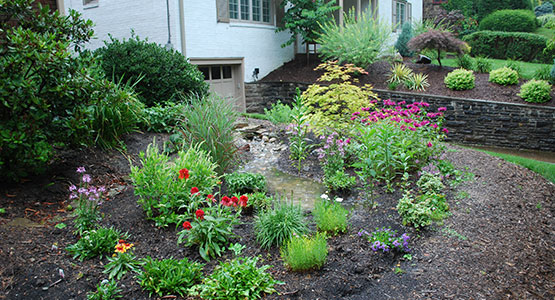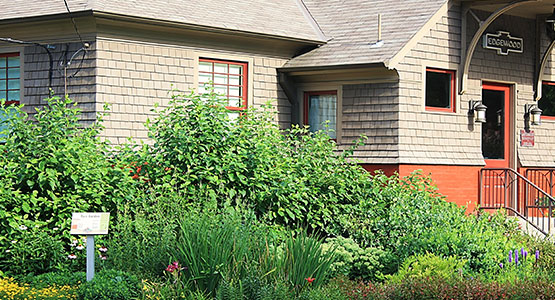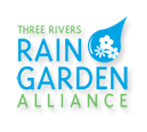What is a rain garden?
On the surface, a rain garden is the same wild flowers and other native plants you'd expect to see in any garden. But the difference runs deep.

During a storm or shower, the rain garden soaks up a few inches of water runoff from a roof, driveway, or other paved surface. That water slowly seeps into the ground instead of heading for the nearest storm drain.

Why does that matter?
It's all about runoff. As our region's forests, farmland and other green spaces are paved over for highways, housing developments and shopping centers, the amount of impervious surface continues to grow. All this "progress" paves over the ground's natural ability to absorb rainwater.
In many local communities, sewage and storm water systems are still connected underground. It takes as little as a tenth of an inch of rainfall to overload them, causing sewage to overflow into streams, yards and rivers. And even where storm water doesn't enter the sewage system, runoff follows storm drains and surface paths, picking up pollutants that contaminate our rivers.
The result is a wastewater treatment nightmare as the cost of improving local water quality to meet EPA standards will run in the billions of dollars--thousands of dollars per homeowner.
Add to that the financial, environmental and health impacts of flash flooding along our rivers and streams, and you begin to see the breadth of the dangers that unmanaged storm water pose to our communities.
The bottom line: Rain gardens are a simple way to make a difference.
Rainwater accumulates one drop at a time. The damage it can do if allowed to overwhelm area drainage and sewer systems is enormously costly. But together, we can turn things around. One rain garden at a time.
